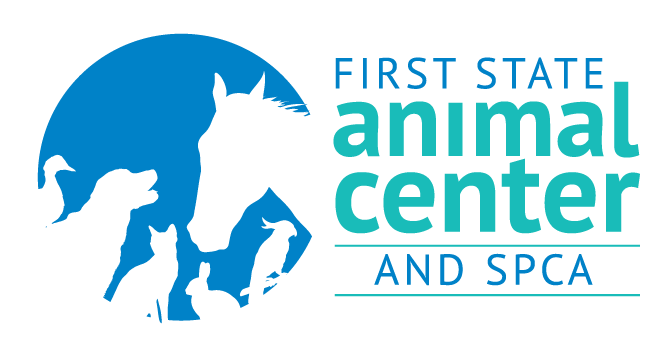DEACC's Captain Sherri Warburton and FSAC-SPCA Executive Director Kevin Usilton pose with new Found Dog sign, with a friend from the Shelter.
January 24, 2015, Kent County - If your dog goes missing, the first thing you should do is call Delaware Animal Care and Control. If you find a dog, you should make the same call, and hold onto the dog until Animal Control comes to pick it up. Now, thanks to a collaboration with an animal control colleague in Maricopa County, Arizona, Lt. John Reynolds. A new pilot program is being launched in Delaware called the “No Lost Dog” program. The goal of the program is to reunite the lost dog with its rightful owner more quickly.
According to Captain Sherri Warburton, head of DEACC, the sign posting should help increase the “return to owner" (RTO) rate Warburton said that statics for last year show statewide stray dog pick-ups where proactive Delaware residents contained a stray dog and called DEACC increased by 22 percent from last year. Officers are often told by the owner that they were looking for their dog in the same area where the officer picked the dog up.
This was the idea behind the creation of the “No Lost Dogs” program in Maricopa County. "If the finder allows a sign to be posted, and the owner immediately sees the sign while looking for their lost dog, not only does the owner get his or her dog returned while it is on the truck, it also prevents the dog getting unnecessary vaccinations it may have already received,” Warburton said. “Another benefit is that it eases the burden on shelter staff who care for the stray dogs once they are logged into the system.”
Warburton said that Lt. Reynolds' program is revolutionary in increasing the “Return to Owner” rate. “This is such as a simple concept, I told him that this should have been here done years ago,” she said. “Now, when a dog is found wandering and contained by a resident and animal control is called, DEACC officers will pick up the dog and request to leave an 11" x 17" signs (with property owners' permission) where the dog was found.” These signs have bright red “Found Dog” words in a large font and information that the officer will write in permanent marker that specifies type of dog, color, gender, and incident number. The DEACC/FSAC logos are visible with the agency phone number in red font as well. These signs are printed on water resistant paper and property owners are asked to leave the sign up for at least five days where the dog was picked up. Comparing the cost of bringing a dog to the shelter, the signs are relatively inexpensive to make so the home owner can dispose of the sign or bring it to the shelter if they wish after the five-day hold. Finders who wish to hold a lost dog at their residence can come to the shelter, file a “found report” and get a sign as well.
According to Captain Warburton, statewide officer production metric totals for 2014 report 619 dogs were returned to the owner from the field and 1,618 dogs were returned to the owner from the shelter. “One of the objectives Director Kevin Usilton and I discussed was ways to improve that statistic and this pilot program is a tool to achieve that objective,” Warburton added.
"This program not only expedites reuniting lost owners with their beloved dogs, but it also removes any confusion about whom to call. A win-win!"
Delaware Animal Care and Control is tasked to carry out the laws pertaining to animal welfare issues in the state, including rabies control, cruelty, neglect and dangerous dogs issues, to name a few. DEACC is under the control of the First State Animal Center and SPCA. The mission of the First State Animal Center and SPCA is twofold: they protect animals from people, by prevention of cruelty and suffering, rescue of the trapped or injured, emergency medical treatment, temporary housing for homeless animals and the reduction of homeless pet overpopulation through targeted spay/neuter and education programs; and they protect people from animals through their commitment in placing only stable, safe and well-adjusted animals into homes where they will thrive while simultaneously educating the public about responsible pet guardianship.

